-
House approves $50.7 billion Sandy relief bill
The House Tuesday night approved, by a vote of 241 to 180, the $50.7 billion in a Sandy relief package, the second installment of a $60.4 billion package requested by the White House and approved by the Senate (last week the House approved the $9.7 million flood-insurance part of the package). Effort by conservative members of the House to offset a part of the bill’s cost with across-the-board federal budget cuts failed on a 258-162 vote.
-
-
Drought, heat turn hundreds of U.S. counties into disaster areas
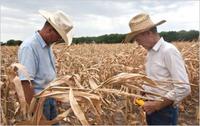
The U.S. Agriculture Department (USDA) last week said that drought conditions and heat necessitated designating 597 counties in fourteen states as primary natural disaster areas. The affected counties have suffered severe drought for eight consecutive weeks, which qualified them for the automatic designation. 2012 had been the hottest year on record for the continental United States: the year’s average temperature of 55.3 degrees Fahrenheit across the Lower 48, which was more than 3.2 degrees warmer than the average for the twentieth century.
-
-
Conquering cholera in Haiti without vaccinating most people
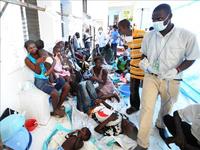
The Centers for Disease Control and Prevention has been skeptical about the effectiveness of vaccination against cholera in Haiti; it has instead emphasized cleaning up the water supply and improving sanitation as the best ways to check the spread of the disease; a new study suggests that vaccination would be effective, and that cholera could be contained in Haiti by vaccinating less than half the population
-
-
Shoring up Long Island’s natural shore defenses against future storms
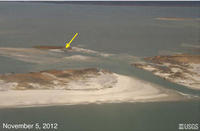
Sand and other coarse-grained sediments are vital to the naturally occurring barrier systems which dissipate storm surges, protect coastal residences, and shelter biologically diverse estuaries and ecosystems; a team of researchers is conducting marine geophysical surveys of the seafloor and shallow subsurface to assess the health of the offshore barrier system which protects the New York Harbor and southwestern Long Island region against damage from future storms
-
-
Before the deluge: improving flood forecasting
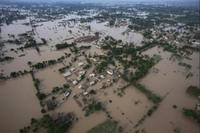
Summer 2012 was the third consecutive summer in which Pakistan has endured catastrophic floods; thirty million people were affected in 2010 and 2011; the summer 2012 floods affected 4.7 million more, killed nearly 500 people, and led to the evacuation of 350,000; Pakistan, stubbornly refusing to accept external assistance in flood forecasting, is not able to predict and prepare for natural disasters on its own
-
-
Appearances deceive: supposedly “stable” zone make earthquakes even more powerful
In an earthquake, ground motion is the result of waves emitted when the two sides of a fault move — or slip — rapidly past each other, with an average relative speed of about three feet per second. Not all fault segments move so quickly, however; new earthquake fault models show that “stable” zones may contribute to the generation of massive earthquakes
-
-
Sen. David Vitter (R-La.) calls Sen. Harry Reid an "idiot” over Katrina comment

Last week, during a floor debate in the Senate on the $9.7 billion portion of the Sandy relief measure, Majority Leader Harry Reid (D-Nevada), who supported the measure, said: “The people of New Orleans and that area, they were hurt, but nothing in comparison to what happened to the people in New York and New Jersey”; in response, Sen. David Vitter (R-Louisiana) said: “Sadly, Harry Reid has again revealed himself to be an idiot”
-
-
"Prophylactic dressing" for walls make buildings safer during earthquakes
In the case of earthquakes, only seconds may remain for a safe escape from buildings; debris falling down and obstructing the escape routes may even aggravate the situation; a new product extends the time for saving lives by reinforcing walls and keeping off the debris; an innovative building material manufacturer now has launched the mature innovation in the market
-
-
Congress approves first part of Sandy relief measure
Congress approved a $9.7 billion Sandy aid package last Friday after a two month delay; the delay was caused by fiscal cliff talks, warnings of federal funds cutbacks, and controversy over millions of dollars in unrelated projects; in two weeks, Congress will vote on the second part — an additional $50 billion Sandy relief package
-
-
Facing bipartisan outrage, House leadership abandons plan to postpone Sandy relief vote
Responding to bipartisan outrage expressed by the New York and New Jersey congressional delegations, House Speaker John Boehner said he was committed to hold a House vote by 15 January on a large relief package for victims of Superstorm Sandy; in addition to abandoning the plan to postpone the vote, the House leadership also gave up on bringing to a vote the $27 billion relief measure proposed by the House Appropriations Committee, and instead will bring to a vote the White House-proposed and Senate-approved bill, which calls for $60.4 billion in disaster relief
-
-
The natural relationship between CO2 concentrations and sea level means that sea level will continue to rise
By comparing reconstructions of atmospheric CO2 concentrations and sea level over the past forty million years, researchers have found that greenhouse gas concentrations similar to the present (almost 400 parts per million) were systematically associated with sea levels at least nine meters above current levels
-
-
Study warns of more powerful quakes in the Himalayas
A research team has discovered that massive earthquakes in the range of 8 to 8.5 magnitudes on the Richter scale have left clear ground scars in the central Himalayas;this discovery has important implications for the area along the front of the Himalayan Mountains, given that the region has a population density similar to that of New York City
-
-
Winter storm hits Midwest, heading toward Northeast
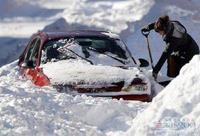
A powerful winter storm system hit the U.S. Midwest Wednesday, heading toward the states of the Northeast, where high winds and heavy snow have disrupted holiday travel, left tens of thousands without power, and were blamed in at least six deaths
-
-
Fiscal cliff discussions get in way of post-Sandy relief measure
The post-Sandy rebuilding effort in the northeast has been stalled by the debate going on in Congress about a solution to the national debt
-
-
Potentially devastating asteroid collision in 2040 not likely to happen
A team of astronomers from the University of Hawaii’s Institute for Astronomy (IfA) have confirmed that the chance of asteroid 2011 AG5 impacting Earth in 2040 is no longer a significant risk — prompting a collective sigh-of-relief; previously, scientists estimated that the risk of this 140-meter-diameter (about the length of two American football fields) asteroid colliding with the Earth – and releasing about 100 megatons of energy — was as high as one in 500
-
- All
- Regional
- Water
- Biometrics
- Borders/Immig
- Business
- Cybersecurity
- Detection
- Disasters
- Government
- Infrastructure
- International
- Public health
- Public Safety
- Communication interoperabillity
- Emergency services
- Emergency medical services
- Fire
- First response
- IEDs
- Law Enforcement
- Law Enforcement Technology
- Military technology
- Nonlethal weapons
- Nuclear weapons
- Personal protection equipment
- Police
- Notification /alert systems
- Situational awareness
- Weapons systems
- Sci-Tech
- Sector Reports
- Surveillance
- Transportation
Advertising & Marketing: advertise@newswirepubs.com
Editorial: editor@newswirepubs.com
General: info@newswirepubs.com
2010-2011 © News Wire Publications, LLC News Wire Publications, LLC
220 Old Country Road | Suite 200 | Mineola | New York | 11501
Permissions and Policies
Editorial: editor@newswirepubs.com
General: info@newswirepubs.com
2010-2011 © News Wire Publications, LLC News Wire Publications, LLC
220 Old Country Road | Suite 200 | Mineola | New York | 11501
Permissions and Policies
